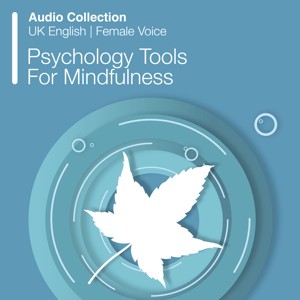Mindfulness Of Sounds And Thoughts (Audio)

Related resources
Tags
Languages this resource is available in
- English (GB)
- English (US)
Problems this resource might be used to address
Techniques associated with this resource
Mechanisms associated with this resource
Introduction & Theoretical Background
Mindfulness-based programs such as mindfulness-based cognitive therapy (MBCT: Segal, Williams & Teasdale, 2013) and mindfulness-based stress reduction (MBSR: Kabat-Zinn, 1990) have demonstrated beneficial effects for a wide range of psychological disorders, as well as helping people to cope with pain and illness (Goink et al, 2015; Khoury et al, 2013). Mindful awareness exercises form part of treatment approaches such as dialectical behavior therapy (DBT: Linehan, 1993) and compassion focused therapy (CFT: Gilbert, 2014).
Mindfulness Of Sounds And Thoughts exercise forms part of the Psychology Tools For Mindfulness Audio Collection, a guided introduction to the practice of mindfulness meditation. The practice compares thoughts to sounds, and in turn practicing mindful awareness of sounds as ‘just sounds’ and thoughts as ‘just thoughts’, noticing how sounds and thoughts come and go in awareness. Mindful awareness is encouraged with metaphors of listening to sounds as if you are a microphone and ‘observing’ thoughts as
Therapist Guidance
References And Further Reading
- Baer, R., Crane, C., Miller, E., & Kuyken, W. (2019). Doing no harm in mindfulness-based programs: conceptual issues and empirical findings. Clinical Psychology Review, 71, 101-114.
- Gilbert, P. (2014). The origins and nature of compassion focused therapy. British Journal of Clinical Psychology, 53(1), 6-41.
- Gotink, R. A., Chu, P., Busschbach, J. J., Benson, H., Fricchione, G. L., & Hunink, M. M. (2015). Standardised mindfulness-based interventions in healthcare: an overview of systematic reviews and meta-analyses of RCTs. PloS one, 10(4), e0124344.
- Kabat-Zinn, J., & Hanh, T. N. (2009). Full catastrophe living: Using the wisdom of your body and mind to face stress, pain, and illness. Delta.
- Khoury, B., Lecomte, T., Fortin, G., Masse, M., Therien, P., Bouchard, V., ... & Hofmann, S. G. (2013). Mindfulness-based therapy: a comprehensive meta-analysis. Clinical Psychology Review, 33(6), 763-771.
- Linehan, M. (1993). Cognitive-behavioral treatment of borderline personality disorder. New York: Guilford.
- Segal, Z. V., &







